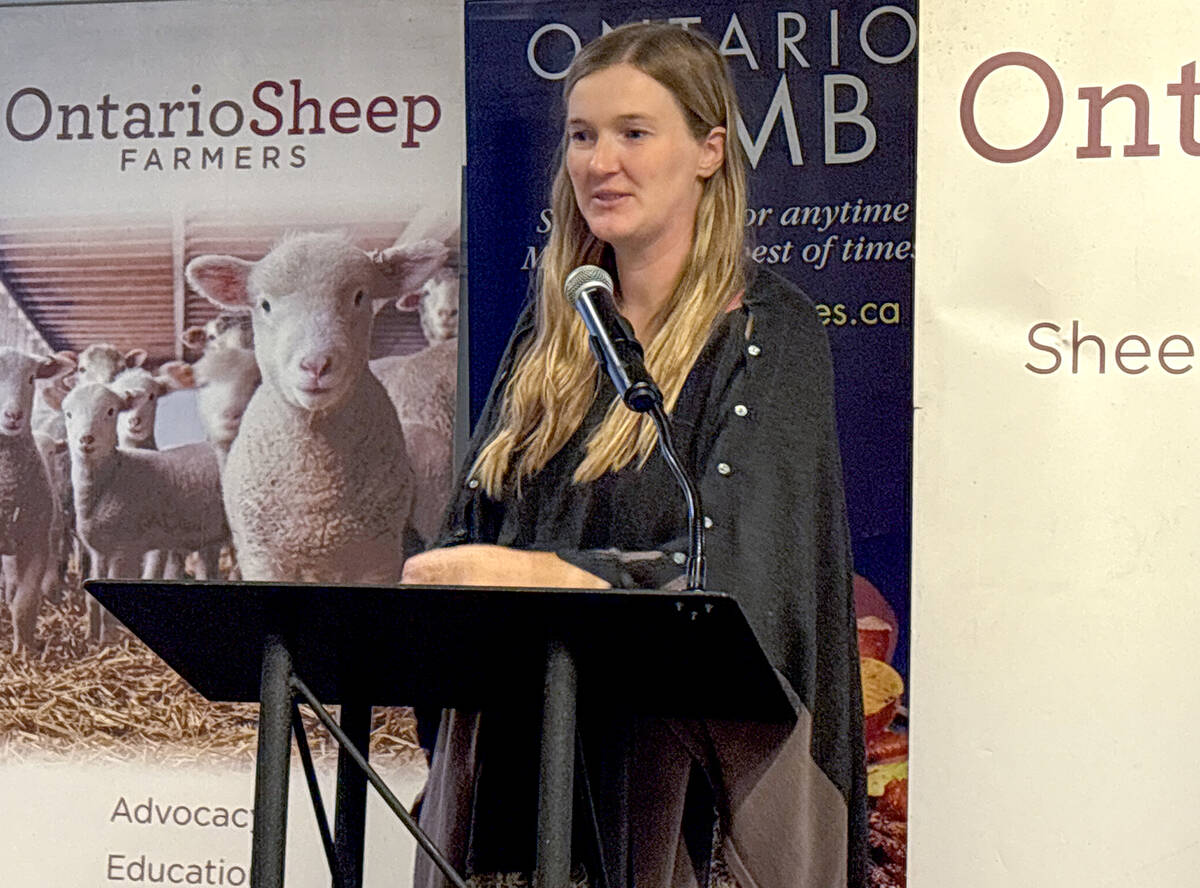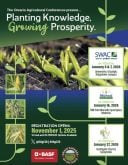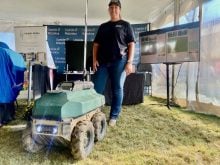Experts and agronomists offered reflections on the 2024 growing season and predictions for 2025 at Canada’s Outdoor Farm Show Tuesday.
Independent agronomist Aaron Breimer, of his company Moose Ag, spoke to the curveballs and unpredictability of the past year and offered predictions and suggestions for farmers in the coming seasons. He was a guest speaker at the Pride Seeds Pavillion.
Breimer began his talk by emphasizing the challenges this growing season presented.
Read Also

Footflats Farm recognized with Ontario Sheep Farmers’ DLF Pasture Award
Gayla Bonham-Carter and Scott Bade, of Footflats Farm, win the Ontario Sheep Farmers’ 2025 DLF Ontario Pasture Award for their pasture management and strategies to maximize production per acre.
“This year especially, mother nature threw lots of curveballs at us,” he said.
He said that some of these anomalies began during the winter.
“We didn’t have a frost,” he said. “We had oats surviving. We had peas surviving.”
He mentioned the increased presence of tar spot in corn as one general challenge this year.
“You know how to scout for tar spot right now? Go find a cornfield. If you can find a cornfield, you’ve got tar spot,” he said.
Later in the day, Great Lakes Grain (GLG) released the findings of its annual Crop Assessment Tour, and results were positive overall.
GLG outlined key findings on corn, soybeans and emerging technologies. Soybeans were found to “remain on track for a strong finish” despite challenges this year like root rot and white mould. Corn has a strong outlook, though it “will require a favourable September to reach maturity,” the report said.
Great Lakes Grain expects corn yields to average 193.5 bushels per acres in 2024 and 52.8 bushels per acre for soybeans. Those are both just below the Agricorp-reported average of 202 bushels for corn and 53 bushels for soybeans in 2023, but well above the 10-year averages of 180 bushels for corn and 48 bushels for soybeans.
“We’ve got a pretty good crop this year,” GLG Manager Don Kabbes said. “Even with the late planting and some of those things, it’s still gonna be a pretty good crop.”
He mentioned that unpredictable weather early in the year made for a tough start to the growing season.
“Our biggest issue was all the rainfall we had in May and June and some of the crop just didn’t get planted in very nice conditions,” he said. “I think that was probably our biggest issue going in. and then of course, some areas just didn’t get planted at all.”
Now, however, he said that “mother nature’s kind of cooperated” and the crop outlook for the year seems positive.
Like Breimer, he said he had seen tar spot “in many, many areas,” though producers have often managed to control it with fungicide. He saw this as a challenge farmers will have to adapt to.
“I think tar spot is here to stay,” he said. “We’re going to have to have pretty regimented fungicide programs to control it.”
Breimer offered several weather predictions based on current patterns.
“Typically, with La Niña, we’re going to have a dry fall, so that’s good for wheat, but at some point, probably close to the end of October into November, the switch is going to get flipped and it’s going to get stormy.
“I think it’s going to be a tough November when we get there,” he said. “I think we’re going to have good wheat planting conditions … overall, I’m thinking we’re going to have a decent fall to get crop off.”
He also predicted a dry spring in 2025.
“By that point, La Niña’s going to be giving up the ghost,” he said, “and usually when La Niña dies off, we start to go a little but dry.”
Kabbes said he felt positive for the remainder of the 2024 season.
“We have a pretty decent crop coming … we were a little bit behind last year, but it seems to have caught up the last few weeks here as well.”















